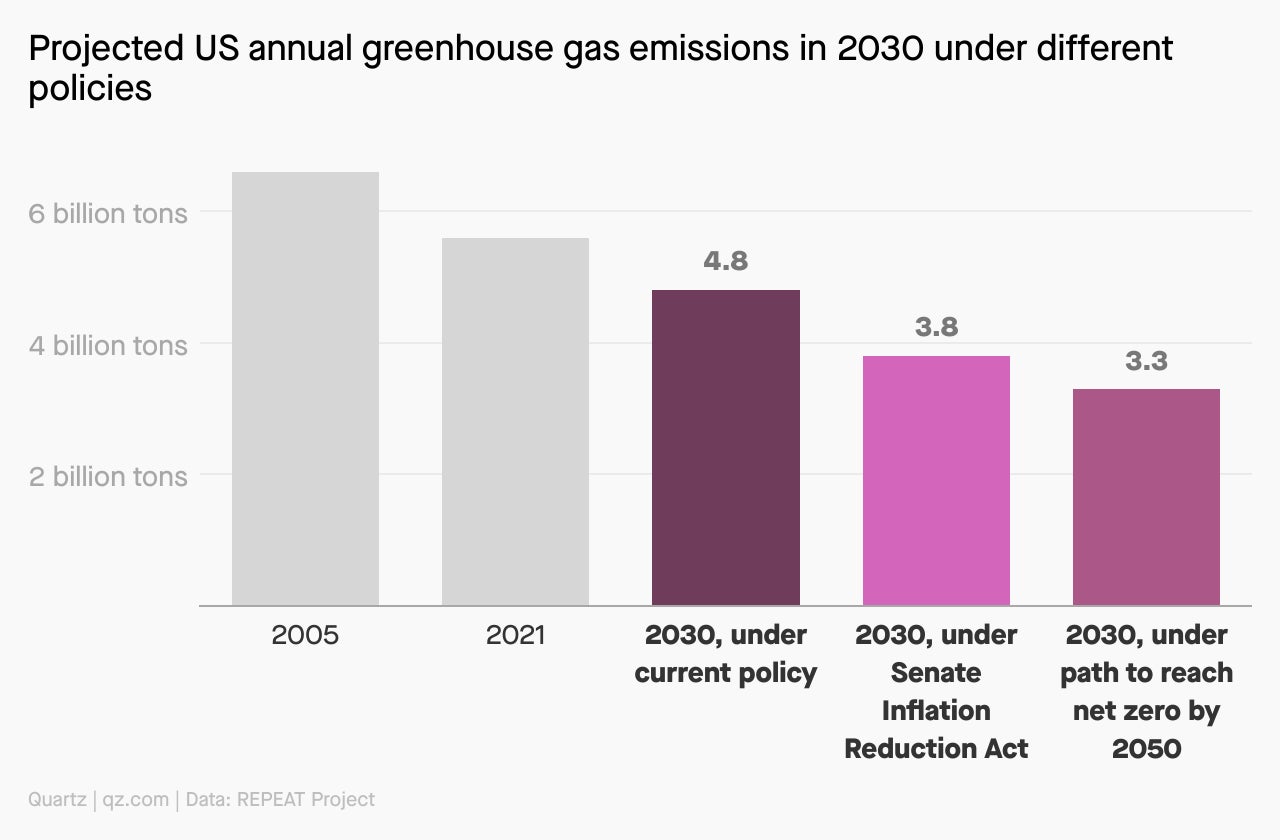The Senate passed the biggest climate bill in US history
The Inflation Reduction Act makes the US a real contender in the clean-energy economy for the first time.

The US Senate on Aug. 7 passed the largest and most significant bill to address climate change in US history. It contains $369 billion to support low-carbon energy and measures to help Americans adapt to worsening climate conditions.
The Inflation Reduction Act is expected to be approved by the House of Representatives on Aug. 12 and signed into law by president Joe Biden. Its provisions include consumer tax rebates on electric vehicles and efficient appliances, federal loans for companies that manufacture solar panels and large batteries, and financial support for farming practices that remove carbon from the atmosphere.
Altogether, these provisions will cause total US emissions in 2030 to be 21% lower than they would be otherwise, according to a Princeton University analysis. That cut isn’t quite deep enough to meet Biden’s stated goal of cutting emissions in half by 2030, compared to 2005 levels, and it’s an even further cry from achieving net-zero emissions by 2050. But it puts those ambitions within realistic reach for the first time.

The bill’s passage comes after more than a year of wrangling between Biden’s allies in Congress and a few key holdouts, especially West Virginia senator Joe Manchin. And it represents a crucial victory for Biden, whose climate agenda was on thin ice after talks with Manchin repeatedly collapsed and the Supreme Court in June curtailed the administration’s authority to regulate carbon emissions directly.
A key reason for the breakthrough is that the bill scraps Democrats’ longstanding, largely unsuccessful approach to climate policy that centers on penalizing carbon emissions, either through taxes or regulation. Instead, the bill aims to pour money into clean energy sources, and let market incentives push Americans to reduce their emissions. (Fossil fuels still garner about $20 billion in direct subsidies in the US.)
The idea is to finally make the US a player in the global clean-energy economy. The US, although highly skilled at research and technology development, has fallen behind Europe and especially China in actually manufacturing clean-energy hardware. That has left the country at the mercy of imports, and missing many opportunities to create jobs and profits. A University of Massachusetts analysis projects the Senate bill could create 9 million new jobs by 2030 in manufacturing and installing clean energy infrastructure, and boost the country’s GDP in that year by close to a percentage point.
The Senate bill makes it cheaper for consumers to go green
The bill also makes it cheaper for consumers to curb their emissions, with a 30% rebate on rooftop solar panels, up to $7,500 back on US-made EVs, and other rebates for energy-saving household appliances. And an electric grid that is less exposed to wild fluctuations in fossil fuel prices will save the average household about $200 per year on electric bills, according to an analysis by the research group Resources for the Future.
The bill also throws a few bones to the fossil fuel industry, in particular offering 60 million acres for offshore drilling. But according to the research group Energy Innovation, for every ton of emissions created by the bill’s oil and gas provisions, at least 24 tons of emissions are avoided by the clean energy provisions.
